
Stainless-steel cutlery is a popular choice for many households due to its durability, sleek appearance, and resistance to corrosion. However, over time, stainless-steel cutlery can become tarnished and lose its shine. Cleaning stainless-steel cutlery may seem like a daunting task, but with the right techniques, you can easily restore its original luster. In this article, we will share some simple and effective tips on how to clean stainless-steel cutlery.
1. Dish Soap and Water
One of the easiest and most effective ways to clean stainless-steel cutlery is to use dish soap and water. Start by filling a sink or large bowl with warm water and a few drops of dish soap. Then, submerge the cutlery in the soapy water and let it soak for a few minutes. After soaking, use a sponge or soft cloth to gently scrub away any dirt or stains. Rinse the cutlery thoroughly with warm water and dry it with a clean towel.
2. Vinegar and Baking Soda
If your stainless-steel cutlery has stubborn stains or built-up residue, you can use a mixture of vinegar and baking soda to remove them. Start by wetting the cutlery with water, and then sprinkle baking soda over the stained areas. Next, pour some vinegar onto the baking soda and let the mixture bubble and fizz. Use a soft cloth or sponge to scrub the cutlery, focusing on the stained areas. Rinse the cutlery with warm water and dry it thoroughly.
3. Lemon Juice and Salt
For a natural and effective cleaning solution, you can use lemon juice and salt to clean your stainless-steel cutlery. Cut a lemon in half and dip the cut side into a bowl of salt. Rub the lemon over the tarnished areas of the cutlery, using the salt as an abrasive. The acidic properties of the lemon juice and the abrasive texture of the salt will help remove stains and restore shine. Rinse the cutlery with warm water and dry it with a clean towel.
Remember to always follow the manufacturer’s instructions for cleaning your stainless-steel cutlery, as some may have specific cleaning recommendations. Additionally, avoid using abrasive cleaners or scrub brushes that can scratch or damage the surface of the stainless steel. With these simple and effective cleaning tips, you can keep your stainless-steel cutlery looking shiny and new for years to come.
Tips for Cleaning Stainless-Steel Cutlery
Stainless-steel cutlery is durable and resistant to stains and rust. However, over time, it can become dull or develop water spots. Here are some tips to help you keep your stainless-steel cutlery clean and shiny:
1. Hand Washing
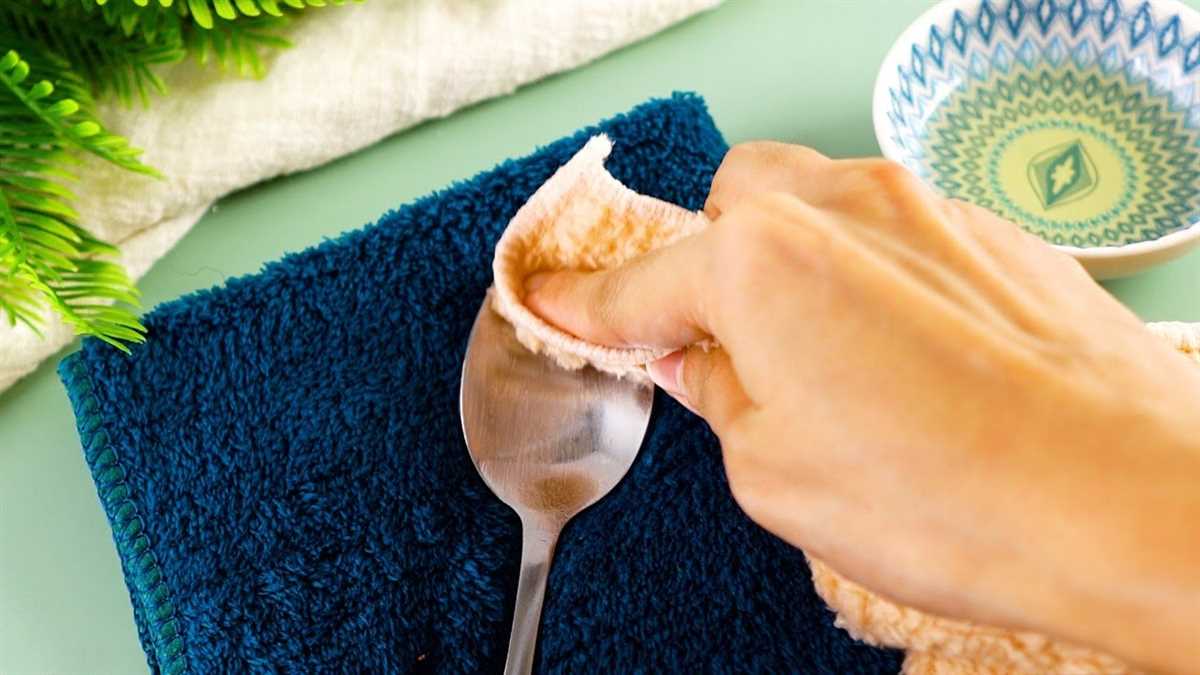
Although stainless steel is dishwasher safe, hand washing is the best method to maintain its shine. Use warm, soapy water and a soft sponge or cloth to clean the cutlery. Avoid using abrasive scrubbers or steel wool, as they can scratch the surface of the stainless steel.
2. Use Baking Soda
If your stainless-steel cutlery has stubborn stains or water spots, create a paste by mixing baking soda with water. Apply the paste to the affected areas and gently scrub with a soft sponge or cloth. Rinse thoroughly and dry with a clean towel.
3. Lemon Juice
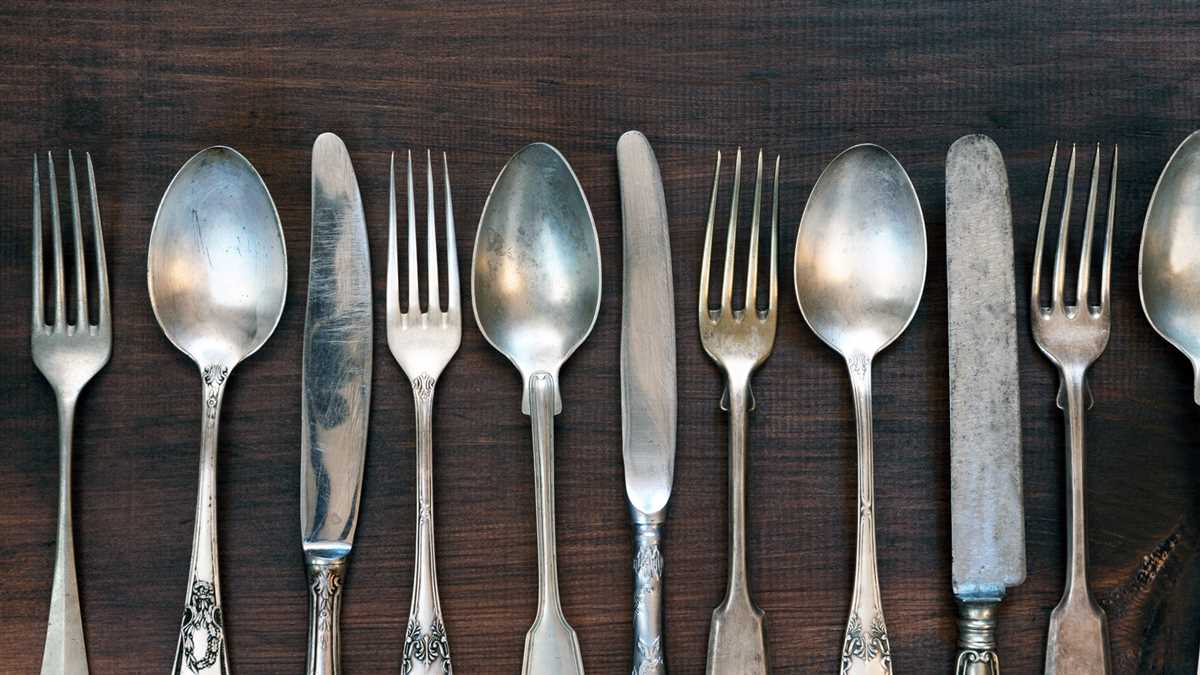
Lemon juice is a natural cleaner that can help remove stains and restore the shine of stainless-steel cutlery. Squeeze some lemon juice onto a soft cloth or sponge and rub it onto the surface of the cutlery. Rinse thoroughly and dry with a clean towel.
4. Vinegar Solution
Vinegar is another effective natural cleaner for stainless-steel cutlery. Mix equal parts white vinegar and water in a bowl or container. Soak the cutlery in the solution for a few minutes, then scrub gently with a soft sponge or cloth. Rinse thoroughly and dry with a clean towel.
5. Olive Oil
Olive oil can be used to polish stainless-steel cutlery and give it a shiny finish. Apply a small amount of olive oil to a soft cloth and rub it onto the surface of the cutlery in a circular motion. Buff the cutlery until the oil is fully absorbed and the cutlery looks shiny and clean.
6. Store Properly
To prevent your stainless-steel cutlery from getting scratched or damaged, store it properly. Use a utensil tray or a drawer with dividers to keep the cutlery separated and organized. Avoid storing the cutlery in a wet or humid environment, as this can lead to rust or tarnish.
By following these simple tips, you can keep your stainless-steel cutlery looking clean, shiny, and in good condition for years to come.
Effective Methods for Removing Stains from Stainless-Steel Cutlery
If you have stainless-steel cutlery, you know how frustrating it can be when stains appear. Fortunately, there are several effective methods for removing stains and restoring the shine to your cutlery. Here are some tips to get your stainless-steel cutlery looking good as new:
1. Baking Soda and Water
One of the easiest and most effective methods for removing stains from stainless-steel cutlery is to create a paste using baking soda and water. Simply mix the two ingredients together until you have a thick paste. Apply the paste to the stained areas of your cutlery and let it sit for a few minutes. Then, scrub the stains with a soft cloth or sponge. Rinse the cutlery with warm water and dry it thoroughly.
2. Vinegar and Salt

Another effective method for removing stains from stainless-steel cutlery is to use a mixture of vinegar and salt. First, sprinkle some salt onto the stained areas of the cutlery. Then, pour some vinegar over the salt and let the mixture sit for a few minutes. Scrub the stains with a soft cloth or sponge, making sure to rub in the direction of the grain. Rinse the cutlery with warm water and dry it thoroughly.
3. Lemon Juice and Baking Soda

If you prefer a natural and citrusy approach to removing stains, you can use a mixture of lemon juice and baking soda. Squeeze some lemon juice onto the stained areas of the cutlery and sprinkle baking soda over the juice. Let the mixture sit for a few minutes and then scrub the stains with a soft cloth or sponge. Rinse the cutlery with warm water and dry it thoroughly.
4. Stainless-Steel Cleaner
If the stains on your cutlery are particularly stubborn, you may need to use a stainless-steel cleaner. Apply the cleaner to a soft cloth and rub it onto the stained areas of the cutlery. Follow the manufacturer’s instructions on the cleaner’s packaging for best results. Rinse the cutlery with warm water and dry it thoroughly.
Remember, when using any of these methods, it’s important to always rinse your stainless-steel cutlery with warm water and dry it thoroughly to prevent water spots and stains from forming. With these effective stain-removal methods, your stainless-steel cutlery will be sparkling clean and ready to use for your next meal.

Best Practices for Maintaining the Shine of Stainless-Steel Cutlery
1. Wash and Dry Immediately
After each use, it is important to wash your stainless-steel cutlery with warm, soapy water. Avoid using harsh cleaning agents or abrasive scrubbers that can scratch the surface. Rinse thoroughly and dry immediately with a soft cloth to prevent water spots and stains.
2. Avoid Dishwashers

While stainless-steel cutlery is dishwasher safe, handwashing is always recommended to maintain its shine. The extreme heat and harsh detergents in dishwashers can cause dulling and discolouration over time. So take the time to handwash your cutlery to preserve its brilliance.
3. Store Properly
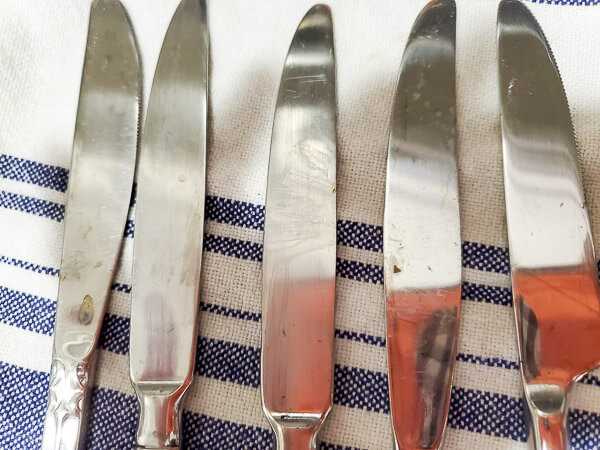
Proper storage is essential for maintaining the shine of stainless-steel cutlery. Avoid leaving them exposed to air and moisture, as this can lead to tarnishing. Instead, store them in a dry place, preferably in a lined cutlery tray or a drawer with a tarnish-resistant liner. This will protect them from scratches and keep them looking their best.
4. Use Stainless-Steel Cleaner
Periodically, you may notice some stubborn stains or fingerprints on your stainless-steel cutlery. In such cases, it is recommended to use a stainless-steel cleaner. Apply a small amount of cleaner to a soft cloth and gently rub it on the affected areas. Rinse thoroughly and dry immediately to restore the shine.
5. Avoid Direct Contact with Acidic Foods
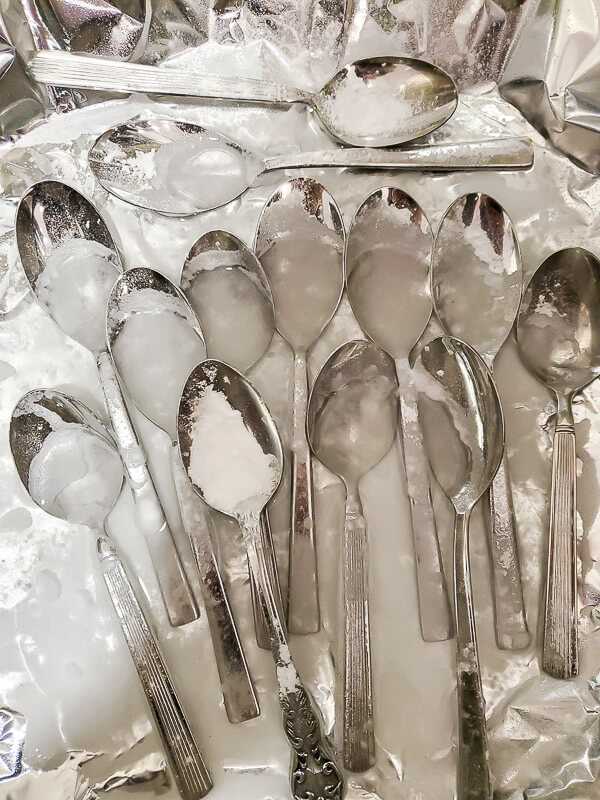
Acidic foods, such as tomatoes and citrus fruits, can cause corrosion and staining on stainless-steel cutlery. To prevent this, avoid leaving your cutlery in contact with these types of foods for extended periods. If you do use them, wash and dry your cutlery immediately after use to minimize the risk of damage.
6. Regular Maintenance
To keep your stainless-steel cutlery looking its best, regular maintenance is key. Take the time to inspect and clean them regularly, even when they are not in use. This will help prevent any build-up or damage that can occur over time and ensure that your cutlery maintains its shiny and polished appearance.
By following these best practices, you can ensure that your stainless-steel cutlery remains shiny and attractive for years to come. So, take care of your cutlery and enjoy its elegance and durability in your everyday use.
Common Mistakes to Avoid When Cleaning Stainless-Steel Cutlery
Cleaning stainless-steel cutlery may seem simple, but there are some common mistakes that people make that can damage the stainless steel or leave it looking less than sparkling clean. Here are some mistakes to avoid when cleaning your stainless-steel cutlery:
Using Abrasive Cleaners
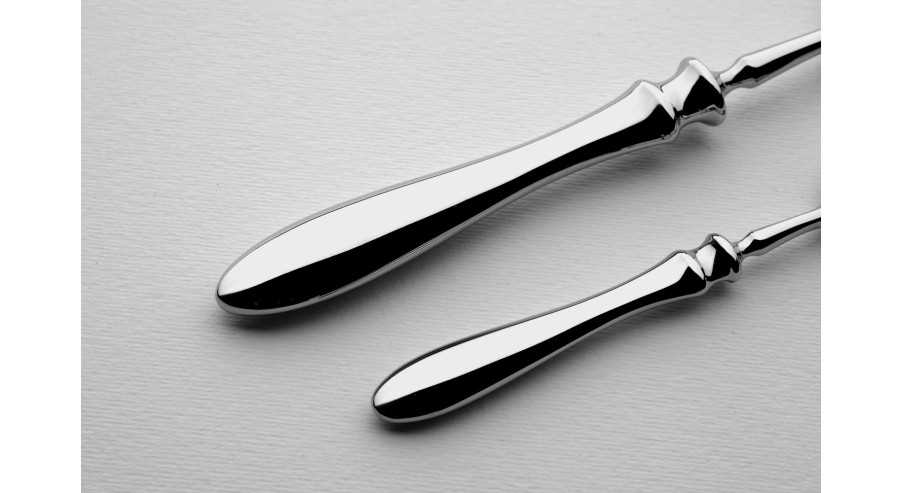
Avoid using abrasive cleaners or scrub brushes on your stainless-steel cutlery, as they can scratch the surface and leave visible marks. Stick to soft sponges or dishcloths instead, and gently scrub the cutlery to remove any dirt or stains.
Leaving Cutlery Soaking for Too Long
While it may be tempting to leave your stainless-steel cutlery soaking in water or cleaning solution for a long time to help with stubborn stains, this can actually cause damage to the metal. Extended soaking can lead to pitting or corrosion of the stainless steel. Instead, clean your cutlery promptly after use.
Using Bleach or Harsh Chemicals
Avoid using bleach or harsh chemicals on your stainless-steel cutlery, as they can cause discoloration or damage to the metal. Stick to mild dish soap and warm water for everyday cleaning. If needed, you can also use a vinegar solution to remove any mineral deposits or stubborn stains.
Not Drying Cutlery Properly
After cleaning your stainless-steel cutlery, make sure to dry it thoroughly with a soft towel or cloth. Leaving it to air dry can result in water spots or streaks. Additionally, moisture left on the surface for an extended period of time can lead to unwanted stains or corrosion.
Using Steel Wool or Metal Brushes
Steel wool or metal brushes may be effective for cleaning other surfaces, but they should never be used on stainless-steel cutlery. These abrasive tools can scratch or damage the stainless steel and leave it looking dull. Stick to gentle cleaning tools to keep your cutlery looking its best.
By avoiding these common mistakes, you can ensure that your stainless-steel cutlery stays clean, shiny, and in great condition for years to come.
Additional Products and Tools for Enhancing the Cleanliness of Stainless-Steel Cutlery
Dish Soap
Using a mild dish soap is one of the easiest ways to keep your stainless-steel cutlery clean. Simply apply a small amount of dish soap to a sponge or cloth, and gently scrub the cutlery. Rinse with water and dry thoroughly to prevent water spots.
Vinegar Solution
Vinegar is a natural cleaner that can effectively remove stains and restore the shine of stainless-steel cutlery. To create a vinegar solution, mix equal parts of white vinegar and water in a bowl. Soak the cutlery in the solution for a few minutes, then scrub with a sponge or cloth. Rinse with water and dry thoroughly.
Baking Soda
Baking soda is another powerful cleaning agent that can be used to remove stubborn stains on stainless-steel cutlery. Create a paste by mixing baking soda with water, and apply it to the stained areas of the cutlery. Gently scrub with a soft sponge or cloth, then rinse with water and dry thoroughly.
Lemon Juice
Lemon juice contains citric acid, which can help to remove discoloration and stains from stainless-steel cutlery. Squeeze fresh lemon juice onto a sponge or cloth, and rub it onto the affected areas. Rinse with water and dry thoroughly to reveal sparkling cutlery.
Microfiber Cloth
A microfiber cloth is a great tool for cleaning stainless-steel cutlery. Its soft texture helps to prevent scratches and streaks, while effectively removing dirt and grime. Use the cloth to gently wipe the cutlery after cleaning, and buff it to a shine.
Soft Bristle Brush
A soft bristle brush, such as a toothbrush, can be useful for cleaning hard-to-reach areas or removing stuck-on food particles from the crevices of stainless-steel cutlery. Wet the brush with water or a cleaning solution, and scrub the areas that need extra attention. Rinse with water and dry thoroughly.
Polishing Cloth
A polishing cloth is a handy tool for adding the finishing touches to your stainless-steel cutlery. Use the cloth to buff the cutlery after cleaning, and it will help to restore the shine and remove any remaining streaks or smudges.
FAQ
What is the best way to clean stainless-steel cutlery?
The best way to clean stainless-steel cutlery is to use warm soapy water and a soft cloth or sponge. Rinse the cutlery thoroughly after washing to remove any soap residue. Dry the cutlery with a soft cloth to prevent water spots or stains.
Can I use bleach to clean my stainless-steel cutlery?
No, you should not use bleach to clean stainless-steel cutlery. Bleach can corrode the metal and cause damage. Stick to using warm soapy water and a soft cloth or sponge to clean your cutlery.
What should I do if my stainless-steel cutlery has rust spots?
If your stainless-steel cutlery has rust spots, you can try using a paste made of baking soda and water to gently scrub the spots. Rinse the cutlery thoroughly after scrubbing and dry it with a soft cloth. If the rust spots persist, you may need to use a stainless-steel cleaner or contact the manufacturer for further advice.
How often should I clean my stainless-steel cutlery?
You should clean your stainless-steel cutlery after each use to prevent food particles and stains from building up. This will help to maintain the appearance of your cutlery and prevent it from tarnishing or corroding over time.
Is it safe to put stainless-steel cutlery in the dishwasher?
Most stainless-steel cutlery is dishwasher safe, but it’s always best to check the manufacturer’s instructions or recommendations. Some cutlery may be more prone to corrosion or damage in the dishwasher, so hand washing is often the safer option.
Video















